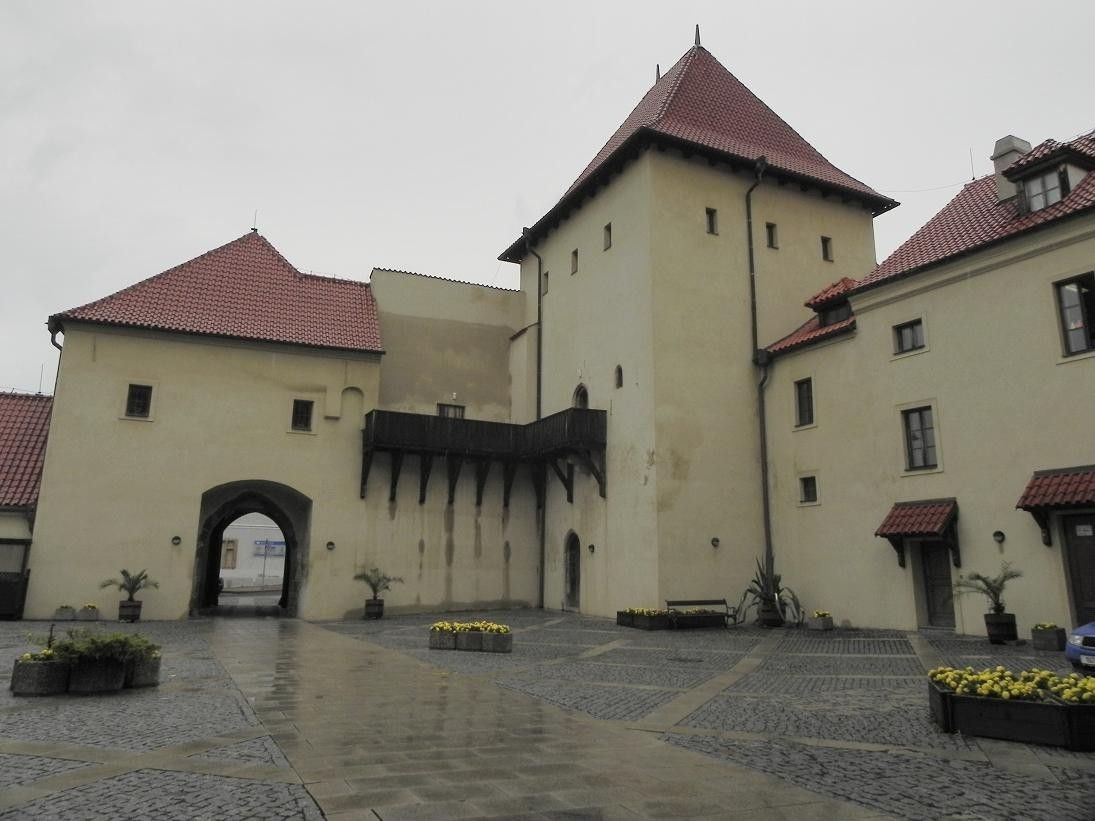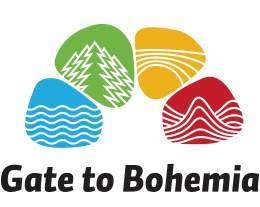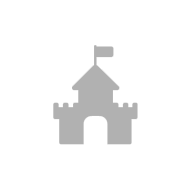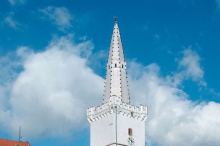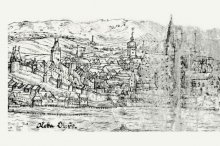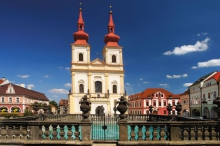The Royal Town of Kadaň
Legend has it that it was the Celts who originally established a settlement called Kadan. The word Kadan can be interpreted as "glowing fire" and the Celts allegedly used fire signals as a method of communication between their fortified settlements in the area of Poohří.
The first evidence of the Kadaň Middle Age settlement dates back to the end of the 11th and the first half of the 12th century. Around this time, an important market settlement named Kadaň was founded beside the ford across the Ohře River. The Czech Prince Bedřich donated the settlement to the Knights Hospitaller on 23rd April 1186, whose knight’s order started to operate in the area around the turn of 1170s and 1180s. Sometime later, Kadaň was promoted to a Free, Royal Town (by either Wenceslas I. or Ottokar II.). Three significant buildings were constructed during this period of time, namely a Royal Castle, the Minority Church, and the Church of St. Michael. The Hospitallers were able to keep parochial rights over the newly established town and later they built the Deanery Church of the Virgin Mary (nowadays the Church of the Exaltation of the Holy Cross). In 1362 the town burnt down along with its castle and suburbs. The town flourished again during the reign of the Bohemian King and latterly Roman Emperor Charles IV. (1346-1378), who granted the town the right to full self-government. Throughout the 1520s, the ideas of the German Reformation, whose spiritual father was the Augustinian monk Martin Luther, began to spread in Kadaň. During the revolt of the Bohemian estates against the Habsburgs (1618), the churches that belonged to the Roman Catholic Church in Kadaň were all looted.
Since 1990, the town centre and its surrounding buildings have undergone extensive transformation. Many buildings have been renovated, including the town hall and its tower.
The town centre is now one of the most interesting and charming protected zones in northern Bohemia, dominated by its town hall. The town hall was originally a two-storey building from the second half of the 14th century and was reconstructed and extended by a prismatic tower on the Gothic arcades by the architect Rott in 1811.
Kadaň Castle
The former Royal Castle in Kadaň is located on the left bank of the Ohře River and boasts one of the finest preserved castellums in Central Europe. It was built by Ottokar II. around 1261. The castles footprint was relatively square and all four corners were protected by square towers with three palace wings between them. Kadaň Castle was originally the seat of the Royal Burgrave. The castle was severely damaged in 1421 by the Crusaders attacking the Hussite garrison who were guarding the town. The castle was repaired in 1467 by King George of Poděbrady. Another extensive reconstruction was carried out by Jan of Lobkovice at the turn of the l15th and 16th century in the late Gothic period. Jan removed the towers and advanced fortification and had the embrasures and the entrance gate in the outer courtyard built. The town obtained the castle in 1595 and during the Thirty Years' War it was heavily damaged by the stay of the Swedish troops. The building had been gradually decaying until the mid-18th century when the castle was rebuilt and turned into barracks. However, the reconstruction was carried out with insensitivity. Moreover, the barracks were severely damaged by the fire of 1811. Subsequent repairs took place between 1816 and 1820. For another 150 years, the castle served the needs of the Austrian Empire and socialist Czechoslovakia. After extensive reconstruction, the castle eventually became the property of the Town, which now uses it for various cultural purposes.
Walls and fortifications
The town had extensive fortifications built during the 13th century and the fortifications were later extended by adding new walls in the 15th century. The remnants of the walls now border the town centre. Only one of the original three town gates, the Mikulov Gate, has been preserved. This gate, also known as the "Holy Gate", is the only surviving gate of the town fortification system. It belongs to the inner belt of the fortification, which was built in the second half of the 14th century. It was part of a larger gate system that was pulled down in 1862. On the outer facade, the grooves that used to lower the lattice can still be seen. Above it looms a prismatic tower with a high, hipped roof. Not far from the former hospital square, where the marketplace was located in the Middle Ages and where you can find the church of St. John the Baptist, a well-preserved barbican of the Žatec Gate remains intact. It served as an advanced fortification for the Žatec Gate, which was pulled down in 1832. It belongs to the second line of fortification, which reinforced the inner fortification line. The barbican allowed fire to the sides, as evidenced by key embrasures. In 1995, the barbican underwent a partial reconstruction and its facade and adjoining walls were repaired.
Executioner’s Alley
Being part of Sokolov Street, Executioner’s Alley is officially registered as the narrowest street in the Czech Republic, The length of the alley is 51 meters and the width at the narrowest point is a mere 66.1 cm.
Church of the Exaltation of the Holy Cross - Kadaň
The church stands in the footprint of a former Gothic church from the 13th century. The vestibule with its circular vault and the lower part of the tower has remained preserved from the original church built in 1458. After the fire of 1635, a baroque rebuilding took place (conducted by D. Rossi and D. Orsi), and in the years 1746 - 1755 the reconstruction was carried out by J. K. Kosh. The building now serves ecclesiastical purposes. In 1995, the Municipal Authority carried out extensive reconstruction of the roof and facade.
Church of the Exaltation of the Holy Cross
The church has a western-oriented front access with two towers and a low hall, the front access with its towers is wider than the adjoining nave, which is complemented by side chapels and an ambit above them. To the east, a stretched, medieval baroque-shaped finish, graded to its own central field, follows the width of the nave. On its northern side there is a large ground-floor sacristy, whilst on the southern side there is an open hall, next to which is a late Baroque corridor that connects the church and deanery.
